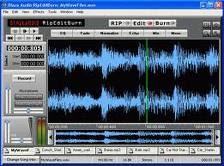An audio editing software essentially allows you to edit audios. It is a software designed to allow end-users to edit, (whether to add effects, cut or add layering) a piece of audio inserted into the software.
BITMAP IMAGE
A bitmap image is a form of image in pixels. Basically, a picture shown has millions of dots (pixels) and every single dot has its own location. colour and intensity. However, the drawback to the pictures in this format is that it has a limit to how much a picture can be distorted (either enlarged or minimized). For example, if the picture is zoomed in to a size much more larger than it supposed to be, the image becomes blur.
DESKTOP PUBLISHING PROGRAM
Desktop publishing programs allow end-users to create print and publications like brochures, leaflets, books, newletters and so on. It allows you to insert and play around with pictures as well as texts. Moreover, it allows you to preview the wanted outcome of the project the end-user is working on. It is a software that goes by the WYSIWYG (What You See Is What You Get) principle.
HTML EDITORS
HTML editors is a software that creates a web page. It assists the author of the website to catalog all the HTML tags.
IMAGE EDITORS
Image editors are software applications that allow the user to alter and improve pictures. For example, an image editor will allow the user to change the color contrast in a picture, crop it to make it smaller, remove any red-eye effects in the picture and even rotate the picture.
MULTIMEDIA
The term means the use of many different types of media usually at the same time on the same software. For example, the combination of the usage of a Powerpoint presentation as well as adding sound effects to the file and a video will tag the term multimedia usage.
VECTOR IMAGE





















